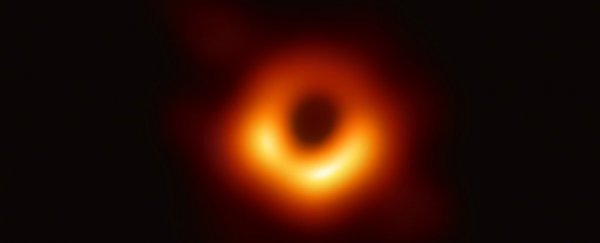Black holes are volumes of space where gravity is extreme enough to prevent the escape of even the fastest moving particles. Not even light can break free, hence the name 'black' hole.
A German physicist and astronomer named Karl Schwarzschild proposed the modern version of a black hole in 1915 after coming up with an exact solution to Einstein's approximations of general relativity.
Schwarzschild realised it was possible for mass to be squeezed into an infinitely small point. This would make spacetime around it bend so that nothing – not even massless photons of light – could escape its curvature.
The cusp of the black hole's slide into oblivion is today referred to as its event horizon, and the distance between this boundary and the infinitely dense core – or singularity – is named after Schwarzschild.
Theoretically, all masses have a Schwarzschild radius that can be calculated. If the Sun's mass was squeezed into an infinitely small point, it would form a black hole with a radius of just under 3 kilometres (about 2 miles).
Similarly, Earth's mass would have a Schwarzschild radius of just a few millimetres, making a black hole no bigger than a marble.
For decades, black holes were exotic peculiarities of general relativity. Physicists have became increasingly confident in their existence as other extreme astronomical objects, such as neutron stars, were discovered. Today it's believed most galaxies have monstrous black holes at their core.
How do black holes form?
It's generally accepted that stars with a mass at least three times greater than that of our Sun's can undergo extreme gravitational collapse once their fuel depletes.
With so much mass in a confined volume, the collective force of gravity overcomes the rule that usually keeps the building blocks of atoms from occupying the same space. All this density creates a black hole.
A second type of miniature black hole has been hypothesised, though never observed. They're thought to have formed when the rippling vacuum of the early Universe rapidly expanded in an event known as inflation, causing highly dense regions to collapse.
Called primordial black holes, they'd have a smaller mass – some even close to that of Earth – but would be little bigger than a jelly bean. Who knew black holes could be so cute?
All topic-based articles are determined by fact checkers to be correct and relevant at the time of publishing. Text and images may be altered, removed, or added to as an editorial decision to keep information current.
